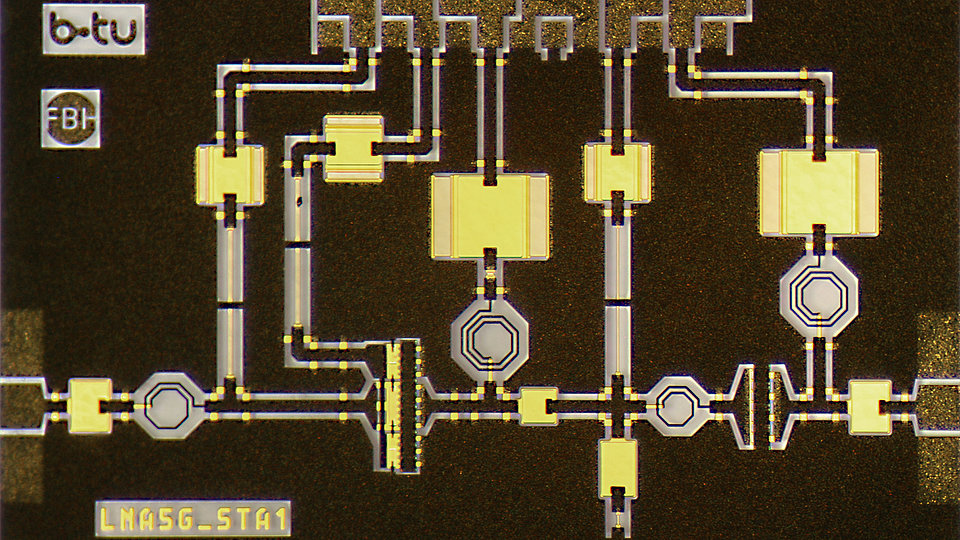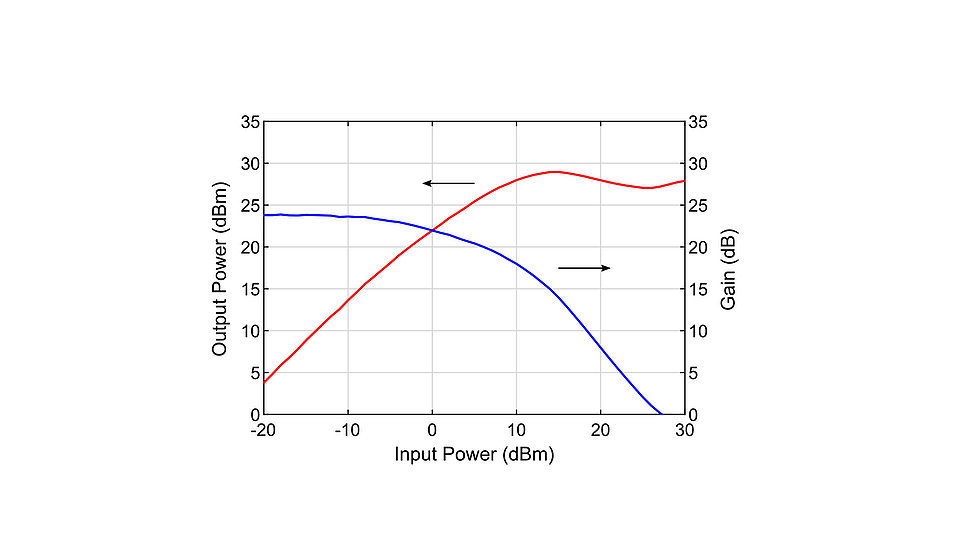Rugged GaN low-noise amplifier MMIC with a compact stacked first stage – suited for receiver designs for extreme conditions
Nowadays, GaN technology is essential in T/R-module frontend applications, where the power amplifier in the transmit path delivers high output power while the low-noise amplifier (LNA) in the receiver path is expected to provide low noise and high linear gain.
In half-duplex mode, e.g. in pulsed radar, it is required to protect the receive path against cross-coupled transmit powers. Rugged GaN LNAs enable new frontend design concepts and even single-chip solutions, as they usually withstand pulsed input overdrive powers up to 40 dBm, so that an input protection is no longer required.
The BTU Cottbus-Senftenberg and the FBH have presented a highly rugged stacked GaN LNA MMIC [1]. The concept of which is based on improving the ruggedness by stacking the first amplifier stage and applying the gate voltage using a high- ohmic resistor. With this first LNA MMIC design focused mainly on ruggedness, a pulsed input overdrive power up to 43 dBm has been achieved.
An improved circuit design of the stacked GaN LNA MMIC concept is presented to prove competitive noise figures and a compact layout, reducing the requirement for additional chip area [2]. The LNA MMIC was developed as a two-stage amplifier, see Fig. 1, based on the rugged stacked GaN LNA [1]. This design focuses on a more compact layout of stacked transistors of the first amplifier stage, a higher small-signal gain and an improved noise figure realized in an LNA operating in the C-band frequency range. The stacked LNA MMIC provides a noise figure of 2.6 dB and a gain of more than 23 dB for small-signal operation. Thereby, the stacked topology can be considered a suitable choice for receiver designs for extreme conditions.
Measured output power and gain as a function of input power of the LNA MMIC are shown in Fig. 2. It is observed that the LNA saturates and keeps the output power well below 30 dBm over the full measurement range, thereby limiting the stress to subsequent stages of the receiver chain.
Financial support by Deutsche Forschungsgemeinschaft (DFG) under grant no. 387060302 is gratefully acknowledged.
Publications
[1] C. Andrei, O. Bengtsson, R. Doerner, S. A. Chevtchenko, and M. Rudolph, “Robust Stacked GaN-based Low-Noise Amplifier MMIC for Receiver Applications,” in 2015 IEEE MTT-S International Microwave Symposium, pp. 1–4, May 2015.
[2] Evelyne Kaule, Peng Luo, Cristina Andrei, Serguei A. Chevtchenko and Matthias Rudolph, “Compact Stacked Rugged GaN Low-Noise Amplifier MMIC,” in 2021 IEEE International Conference on Microwaves, Antennas, Communications and Electronic Systems (COMCAS), Tel-Aviv, Nov. 2021.

